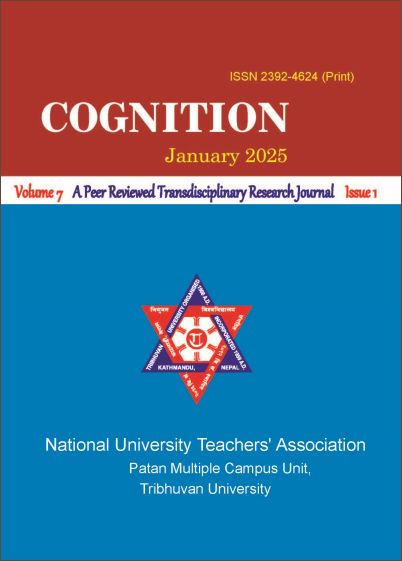Heavy Metal Contamination in Commercial Turmeric: A Public Health Perspective
DOI:
https://doi.org/10.3126/cognition.v7i1.74770Keywords:
Turmeric, Lead, Chromium, adulteration, concentration, AASAbstract
Turmeric is a spice obtained by drying and grinding the rhizomes of the plant Curcuma longa. Turmeric is a key component of traditional Ayurvedic medicine which is also one of the basic and most widely used spice in regular cooking. It has an active component curcumin. Due to its increasing popularity, turmeric is found to be adulterated with the salt of Lead and Chromium, usually with lead chromate. The presence of these two heavy metals in the turmeric elevates the level of these metals in our body causing various health implications. The presented study aimed to analyze the concentration of Lead and Chromium in the commercial turmeric powder. For this study, seven turmeric samples of different brands were collected from Itahari and Biratnagar. From the collected seven turmeric samples, seven sample solutions were prepared by aqua regia acid digestion. Then, for obtaining the concentration of Lead and Chromium the sample solution was analyzed by AAS. The AAS analysis revealed the concentration of lead and chromium in the sample taken. The concentration of the two metals obtained from the AAS analysis was compared to the limit recommended by WHO and DFTQC. In sample A, the concentration of both lead and chromium was found to be the highest, with the lead concentration higher than the permissible limit recommended by both DFTQC and WHO. The lead concentration in other samples (B, C, E & G) was also higher than the limit. While in two samples, (D & E) the concentration of lead was <0.01ppm. The chromium concentration in all seven samples was less than 6ppm which is less than the limit recommended by both WHO and DFTQC. Additionally, the moisture content and pH of the turmeric samples were also determined.




